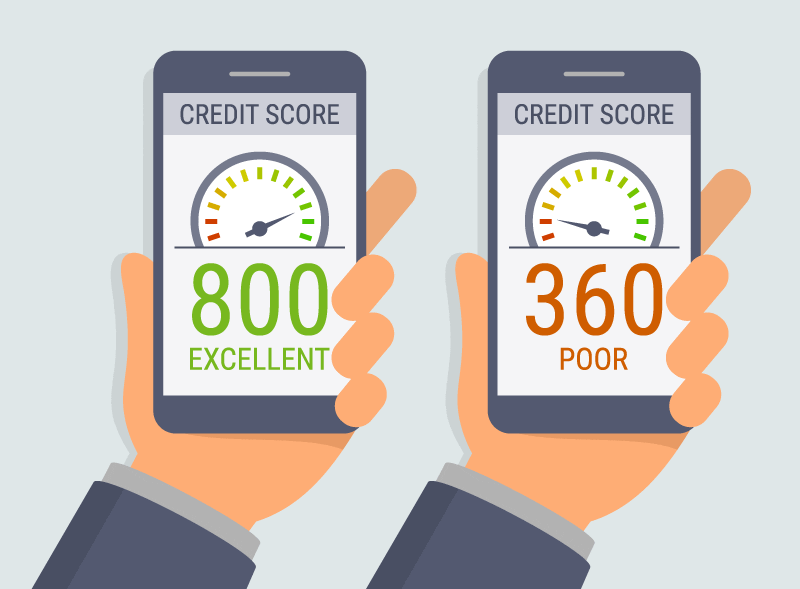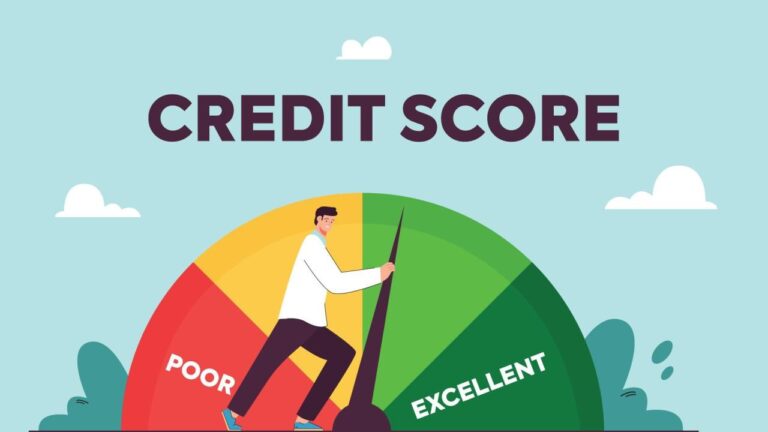In today’s financial ecosystem, your credit score is more than just a number; it’s a powerful reflection of your financial health and a critical gatekeeper to opportunities. A strong credit score can unlock favorable interest rates on loans, secure better terms on credit cards, simplify rental applications, and even influence insurance premiums. Conversely, a low score can lead to higher borrowing costs, rejections, and unnecessary financial stress. While improving your credit score might seem like a daunting task, it’s entirely achievable with the right strategies and consistent effort. This comprehensive guide will unveil effective credit improvement hacks, providing you with actionable insights and proven methods to significantly boost your score, paving your way to a more secure and prosperous financial future. We’ll dive deep into the mechanics of credit scoring, common pitfalls to avoid, and step-by-step strategies to build a robust credit profile.
The Core of the Credit Score

Before you can improve your credit score, you need to understand what it is, how it’s calculated, and why it matters so much. Think of your credit score as your financial GPA – it tells lenders how responsibly you manage borrowed money.
A. What is a Credit Score?
A credit score is a three-digit number (typically ranging from 300 to 850 for FICO and VantageScore models) that summarizes your creditworthiness based on your credit report. Lenders use it to assess the risk of lending you money.
- FICO Score: The most widely used credit scoring model, developed by the Fair Isaac Corporation.
- VantageScore: A newer credit scoring model developed by the three major credit bureaus (Equifax, Experian, TransUnion).
- Credit Report vs. Credit Score: Your credit report is a detailed history of your credit accounts and payment behavior. Your credit score is a numerical summary derived from the information in your credit report.
B. The Five Pillars of Your Credit Score
Both FICO and VantageScore models weigh different factors in their calculations. Understanding these components is crucial for targeted improvement.
- A. Payment History (35% FICO, Highly Influential VantageScore): This is the most critical factor. It reflects whether you pay your bills on time. Late payments, bankruptcies, and collections severely damage your score.
- B. Amounts Owed / Credit Utilization (30% FICO, Highly Influential VantageScore): This refers to the amount of credit you’re using compared to your total available credit. A high utilization ratio (e.g., using 80% of your available credit) indicates higher risk. Keeping this low is key.
- C. Length of Credit History (15% FICO, Moderately Influential VantageScore): The longer your credit accounts have been open and active, the better. This demonstrates a long track record of responsible borrowing.
- D. New Credit (10% FICO, Less Influential VantageScore): Opening multiple new credit accounts in a short period can lower your score, as it suggests higher risk or a desperate need for credit. Hard inquiries from loan applications also fall here.
- E. Credit Mix (10% FICO, Less Influential VantageScore): Having a healthy mix of different types of credit (e.g., credit cards, auto loans, mortgages) can positively influence your score, showing you can manage various credit products responsibly.
C. Why a Good Credit Score Matters
A higher credit score isn’t just about showing off; it translates into tangible financial benefits.
- Lower Interest Rates: On mortgages, auto loans, and personal loans, a better score means significantly lower interest payments over the life of the loan, saving you thousands.
- Easier Loan Approvals: Lenders are more willing to approve your applications for various forms of credit.
- Better Credit Card Offers: Access to premium cards with rewards, lower interest rates, and better perks.
- Lower Insurance Premiums: In many places, insurance companies use credit-based insurance scores to determine rates.
- Rental Applications: Landlords often check credit scores to assess a tenant’s reliability.
- Utility Deposits: A good score can waive security deposits for electricity, gas, and water.
- Employment Background Checks: Some employers may check credit reports (not scores) for roles involving financial responsibility.
Foundational Credit Improvement Hacks
Before tackling advanced strategies, master these fundamental habits that form the bedrock of good credit.
A. Pay Your Bills On Time, Every Time
This is the single most impactful factor in your credit score. A single late payment can significantly drop your score.
- Automate Payments: Set up automatic payments for all your credit cards, loans, and other bills from your bank account. This ensures you never miss a due date.
- Set Reminders: Use calendar alerts, app notifications, or manual reminders a few days before due dates.
- Pay More Than the Minimum (If Possible): While minimum payments keep you on time, paying more helps reduce your balance and interest, indirectly benefiting your utilization.
- Consider Bi-Weekly Payments: If you get paid bi-weekly, making half-payments every two weeks can help manage cash flow and ensure on-time payments.
B. Keep Your Credit Utilization Low
Your credit utilization ratio (or credit utilization rate) is the second most important factor. It’s calculated by dividing your total credit card balances by your total credit limits.
- Aim for Under 30%: Financial experts generally recommend keeping your overall credit utilization below 30%. For example, if you have a total credit limit of $10,000 across all cards, try to keep your combined balance below $3,000.
- Ideal: Under 10%: For an excellent score, aiming for under 10% utilization is often recommended.
- Pay Balances Early/Multiple Times a Month: You don’t have to wait for your statement due date. Paying down your balance before your statement closing date ensures a lower balance is reported to the credit bureaus. Consider making multiple smaller payments throughout the month.
- Request Credit Limit Increases: If you’re responsible with your spending, requesting a credit limit increase (without increasing your spending) can lower your utilization ratio. Be aware this might involve a hard inquiry.
C. Don’t Close Old Accounts
The length of your credit history positively impacts your score.
- Keep Old Accounts Open: Even if you don’t use an old credit card much, keeping it open and active (e.g., making a small purchase and paying it off monthly) contributes to your average age of accounts.
- Exceptions for Closing: Close accounts only if they have high annual fees you can’t justify, or if they pose an irresistible temptation to overspend.
D. Monitor Your Credit Report Regularly
Errors on your credit report can unfairly drag down your score. You have the right to access your credit report for free.
- Annual Free Reports: In the U.S., you can get a free credit report from each of the three major bureaus (Equifax, Experian, TransUnion) once every 12 months via AnnualCreditReport.com. In other countries, check local regulations.
- Dispute Errors: If you find inaccuracies (e.g., accounts you don’t recognize, incorrect late payments), dispute them immediately with the credit bureau and the creditor. Provide documentation if possible.
- Fraud Alerts: Consider placing a fraud alert on your report if you suspect identity theft.
Advanced Credit Improvement Hacks

Once you’ve mastered the fundamentals, these strategies can help you further optimize your score.
A. Become an Authorized User
If you have little to no credit history (a “thin file”), becoming an authorized user on someone else’s established, well-managed credit card can help.
- Choose Wisely: The primary cardholder must have a long, positive payment history and low credit utilization. Their good habits will reflect on your report.
- Not All Cards Report: Confirm that the card issuer reports authorized user activity to all three credit bureaus.
- Be Responsible: Ensure you understand the terms, even if you don’t have spending privileges. The primary user’s actions affect your score.
B. Secured Credit Cards
For those with poor credit or no credit history, a secured credit card is an excellent stepping stone.
- How They Work: You put down a cash deposit (e.g., $300), which becomes your credit limit. This deposit secures the card, reducing risk for the issuer.
- Report to Bureaus: Use it like a regular credit card (make purchases, pay on time), and the issuer reports your activity to the credit bureaus.
- Graduate to Unsecured: After 6-12 months of responsible use, many issuers will “graduate” you to an unsecured card and refund your deposit.
C. Credit Builder Loans
A credit builder loan is specifically designed to help people establish or rebuild credit.
- How They Work: You “borrow” a small amount (e.g., $500-$1,000), but the funds are held in a savings account or CD. You make regular payments over a set period (e.g., 6-24 months). Once the loan is fully paid, you receive the funds.
- Report to Bureaus: The lender reports your on-time payments to the credit bureaus, building positive payment history.
- Forced Savings: It also acts as a forced savings mechanism.
D. Strategically Applying for New Credit
While new credit inquiries can temporarily ding your score, strategically opening new accounts can ultimately help your credit mix and utilization.
- Needs-Based: Only apply for credit you genuinely need (e.g., a mortgage, a car loan).
- Patience is Key: Space out applications. Avoid applying for multiple lines of credit within a short period (e.g., 6 months).
- “Soft” vs. “Hard” Inquiries:
- Hard Inquiries: Occur when a lender pulls your credit report to make a lending decision (e.g., for a loan or new credit card). They can temporarily lower your score by a few points for about 12 months but remain on your report for two years.
- Soft Inquiries: Occur when you check your own credit, or when lenders pre-approve you for offers. They don’t affect your score.
E. Handling Collections and Charge-Offs
If you have past-due accounts sent to collections or charged off by original creditors, addressing them is crucial.
- Pay for Delete (P4D): Negotiate with collection agencies to have the negative mark removed from your credit report in exchange for payment. Get this agreement in writing before paying. Not all agencies will agree.
- Settle for Less: If P4D isn’t an option, settling the debt (even for less than the full amount) is generally better than leaving it unpaid, as a “paid collection” looks better than an “unpaid collection.”
- Statute of Limitations: Understand the statute of limitations for debt in your jurisdiction. After this period, a creditor cannot sue you for the debt, though it might still appear on your report for up to 7 years.
F. Debt Consolidation
Consolidating high-interest debt into a single loan (e.g., a personal loan or balance transfer credit card) can simplify payments and potentially lower your interest rate.
- Benefits: Can simplify payments and potentially lower overall interest costs.
- Risks: If you don’t change your spending habits, you might rack up new debt on your old cards, leaving you with even more debt. This strategy requires strong financial discipline.
- Impact on Credit: It can initially lower your score by closing old accounts (reducing credit age) or by generating a hard inquiry. However, if managed responsibly, the resulting lower utilization and consistent payments will boost your score over time.
Credit Score Factors Explained
A deeper dive into some key factors and how they work.
A. Credit Age
The average age of your credit accounts contributes to your score. This emphasizes the importance of a long, positive credit history.
- Impact: A longer history shows stability and experience in managing credit.
- Strategy: Keep your oldest accounts open and active. Even if you get a new card, don’t rush to close an old one.
B. Credit Mix
While less impactful than payment history or utilization, having a mix of different credit types (e.g., installment loans like mortgages or auto loans, and revolving credit like credit cards) can be beneficial.
- Show Responsible Management: It demonstrates your ability to handle various forms of credit responsibly.
- Natural Progression: This usually develops naturally as you age and require different types of loans. Don’t open accounts solely for credit mix purposes.
C. Hard Inquiries vs. Soft Inquiries
Understanding the difference is critical when applying for credit.
- Hard Inquiries (Credit Pulls): Occur when a lender checks your credit for a lending decision. Each hard inquiry can ding your score by a few points and stays on your report for two years (though its impact fades after 12 months). Too many in a short time signal risk.
- Soft Inquiries: Occur when you check your own credit, or when lenders pre-screen you for offers. They do not affect your score. Check your score regularly using services that provide soft inquiries.
D. The Impact of Public Records and Collections
Negative marks like bankruptcies, foreclosures, lawsuits, or collections can severely damage your score and remain on your report for a significant period.
- Bankruptcies: Up to 7 or 10 years depending on the type.
- Foreclosures/Charge-Offs/Collections: Generally up to 7 years.
- Strategy: Address any outstanding negative items. While they remain on your report, demonstrating new, positive payment behavior can mitigate their impact over time.
Maintaining a High Credit Score
Once you’ve boosted your score, maintaining it requires consistent good habits.
A. Continuous Monitoring
Keep an eye on your credit reports and scores regularly. Many credit card companies and banks now offer free credit score monitoring.
- Catch Errors Early: Spot and dispute any inaccuracies promptly.
- Identify Fraud: Detect any suspicious activity that could indicate identity theft.
- Track Progress: See how your score fluctuates and understand the factors influencing it.
B. Responsible Use of Credit Cards
Credit cards are powerful tools for building credit, but only if used responsibly.
- Pay Off Balances in Full: The golden rule. This avoids interest charges and keeps your utilization at 0%.
- Don’t Use All Available Credit: Even if you pay it off monthly, a high reported balance can hurt your utilization. Pay before the statement date.
- Budget Your Spending: Ensure you’re not using credit cards to live beyond your means.
C. Be Patient
Credit score improvement is a marathon, not a sprint. Significant increases often take time, especially if you’re rebuilding from a poor score.
- Consistency is Key: The most important factor is consistent, responsible credit behavior over months and years.
- Understand Timelines: Negative items typically fall off your report after seven years. Positive payment history accumulates over time.
Conclusion
Your credit score is a dynamic reflection of your financial habits, and improving it is entirely within your control. By understanding the key factors that influence your score, adopting disciplined payment practices, strategically managing your credit utilization, and continuously monitoring your credit reports, you can systematically build a stronger credit profile. Whether you’re starting from scratch or rebuilding after past challenges, remember that consistency, patience, and informed decision-making are your most powerful allies. Implement these credit improvement hacks diligently, and you’ll not only see your score rise but also unlock a world of better financial opportunities and greater peace of mind. Take charge of your credit today, and secure a brighter financial tomorrow.



